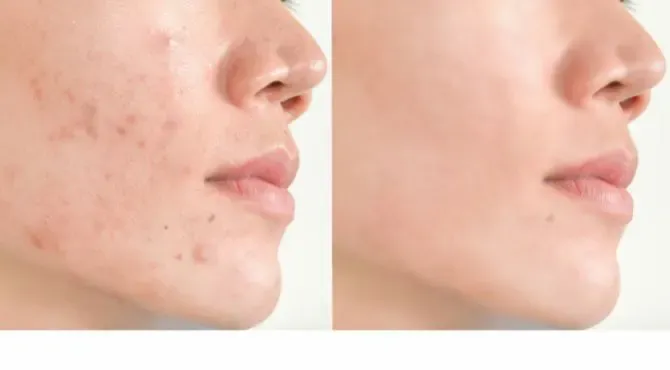The benefits of burdock against acne

The Benefits Of Using Burdock For Skin and Acne. Acne is a common skin condition that can be both frustrating and challenging to manage. While numerous skincare products flood the market, one natural remedy that has gained attention for its potential benefits against acne is burdock. Derived from the roots of the burdock plant (Arctium lappa), this herbal remedy has a long history of traditional use in various cultures. Renowned for its potential medicinal properties, burdock is believed to offer a range of benefits for the skin, including combating acne. In this exploration, we delve into the potential advantages that burdock may bring to the table in the quest for clearer and healthier skin. From its anti-inflammatory properties to its potential impact on hormonal balance, we unravel the multifaceted benefits that make burdock an intriguing contender in the pursuit of an effective acne-fighting solution.
What is burdock?

Burdock ( Arctium lappa) is a herbaceous plant. Like the dandelion or the yarrow, it belongs to the Asteraceae family.
It grows in Asia, North America and Europe, along the roads or meadows. It can be found up to 1,800 meters above sea level.
Able to reach up to 2 m in height, it produces flower heads covered with hooks. This allows it to cling to the fur of animals and disseminate its seeds in nature.
Like those of milk thistle, Purple flowers appear from July to September.
If its leaves are edible, it is mainly the root user. Indeed, it concentrates most of the active ingredients of the plant, in particular inulin, a natural fibre rich in prebiotics.
Thanks to its depurative action, it helps to relieve specific skin diseases such as eczema, psoriasis or acne. It eliminates the accumulated toxins that "suffocate" the skin and promote imperfections.
It also has an anti-inflammatory action that reduces skin inflammation and breakouts.
Finally, it is antibacterial and fights against the bacteria responsible for skin diseases, including Cutibacterium acnes. This is why burdock is especially recommended against acne.
The roots can be eaten fresh (in broth, vegetable stew, etc.) or dried (in infusion or decoction).
Burdock is also available in food supplements in capsules, tablets, powder, mother tinctures or ampoules.
The ideal is to take it as a cure for 2 to 3 months. It is possible to combine it with other plants with cutaneous properties such as wild pansy, dandelion or nettle.
Burdock extracts are also found in cosmetic treatments for oily and acne-prone skin: creams, serums, lotions, etc.
The leaves and roots can also be used as a poultice, directly on skin and areas affected by acne.
Burdock root benefits for acne

Burdock detoxifies the body.
Great depurative stimulates the functions of the emunctory organs, such as the liver and the kidneys. These are responsible for getting rid of accumulated toxins and waste.Unfortunately, they are saturated, and they no longer manage to play their role. The secondary emunctory organs, such as the skin, take over at this stage.
Therefore, the elimination of toxins is done via the skin, which results in the appearance of imperfections or acne.
Burdock is, therefore, interesting because it supports the main emunctories and "cleans" the blood and the body.
In addition, it contains potassium nitrate, a mineral compound with diuretic and detoxifying action. It promotes the elimination of waste through the urinary and digestive tracts.
In traditional Chinese medicine, it is indicated to detoxify the body, as shown in this review.
Read More: Are probiotics effective against acne?
Burdock reduces skin inflammation.
The plant has an exciting anti-inflammatory action in case of acne. Indeed, this dermatological disease is linked to inflammation in the pilosebaceous follicles.This results in outbreaks of pimples, papules, pustules or even nodules.
The root contains lignans like arctigenin. These compounds have an anti-PAF (Platelet-activating factor) action, a mediator involved in the inflammatory reaction.
In this study, burdock had beneficial effects on inflammatory type acne.
Burdock is antibacterial and anti-biofilm
Finally, the plant exerts an antibacterial action, and it fights against bacteria responsible for skin diseases such as Cutibacterium acnes, involved in acne.It is also anti-biofilm. When the skin microbiota is out of balance, thin layers called "biofilms" form on the skin's surface. These isolate bacteria and allow them to grow.
By preventing this process, burdock helps reduce acne and restore healthy skin.
This study shows the antibacterial and anti-biofilm action of the plant.
Read More:
Post a Comment